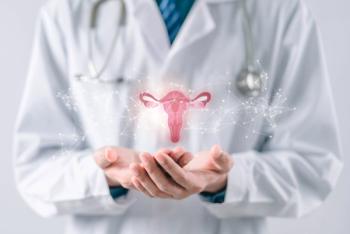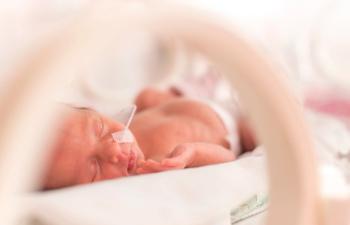
Legally Speaking: Was this forceps delivery appropriate?
A patient charges that her infant’s injuries could have been avoided.
The patient first presented to defendant ob/gyn PC for prenatal care on June 6, 2008, at age 23. Her estimated date of delivery was January 24, 2009. After the woman’s third visit, the certified nurse midwives (CNMs) in the group followed her, on numerous occasions, between September 5, 2008 and February 4, 2009. By November 21, uterine size discrepancy was noted. The woman’s lab test results and blood pressure remained within normal limits; there was never any edema. On January 26, an ultrasound and biophysical profile (BPP) were done. The BPP was scored 8/8 and estimated fetal weight (EFW) was 3800 g (8 lb 6 oz) (±555 g, at the 75.3 percentile). On January 30 defendant CNM A noted that the patient was post-term; a non-stress test was reassuring. On February 2 the mother was 0 cm dilated, -3 station, and she weighed 204 lb. On February 4, 2009 CNM A noted 0 cm dilated, 0% effaced, and -2 station and 202 lb at 41.4 weeks. BPP was 8/8 with EFW 9 lb or 4087 g (±613).
The woman was instructed to present to the hospital that evening for induction and did so at 8:18 p.m. She was counseled about mode of delivery and requested a trial of labor. She was 0 cm, 30% effaced; presentation was cephalic, at -2 station, and clinical pelvimetry was adequate. EFW was 4087 g. Fetal monitoring revealed the absence of contractions initially, with a slow onset thereafter, and a fetal heart rate (FHR) 122–140 bpm with mild to moderate variability, accelerations and no decelerations. Membranes remained intact. An 8:46 note by CNM A documented delivery route counseling for macrosomia and shoulder dystocia given; the patient was thoroughly informed of the nature of macrosomia and shoulder dystocia and the risks and benefits of vaginal delivery versus cesarean delivery, as well as available alternatives. The risks and benefits to both her and her fetus and reasonable expected outcome to each alternative were discussed and the patient requested trial of labor. Dinoprostonel was placed and the mother was transferred from the OB suite to a room at 9:40. FHR monitoring was continued, externally, with acceptable FHR.
By 3:00 a.m. the patient was noted to have regular contractions. A pelvic exam performed 25 minutes later revealed 1 cm/ 90% / -2 station, and membranes intact. At 5:00, when the patient refused further pelvic exam and requested an epidural for pain management, she was transferred to an L&D room. An epidural was placed by 6:20 a.m. At 6:59, pelvic exam revealed that the mother was 4 cm dilated with 100% effacement without fetal descent. At 8:18 when she was 6 cm dilated, CNM B ruptured the woman’s membranes, and a Foley was placed. At 8:21 Dr C was noted to be attending to the patient. The patient remained 6 cm dilated, 100% effaced, and at -2 station. External fetal monitoring remained ongoing; the FHR was in the 150s with moderate variability, reactive, no decelerations. At 10:00, variability was minimal.
At 10:23 a pelvic exam by CNM B noted 6-cm dilation and cephalic presentation. Because there had been no cervical change over 2 hours, the decision was made to administer oxytocin. Risks and benefits of the drug were discussed with the patient and she gave informed consent as per CNM B. The reason for use of oxytocin was suspected protracted dilatation. At 11:00 external fetal monitoring continued showing regular contractions and FHR in the 140s with minimal variability and no decelerations noted. Anesthesia “top of” was given at 10:36 and 11:32, with good pain relief noted.
At 12:40 p.m., a pelvic exam by CNM B revealed cervical dilation of 9.5 cm, 100% effacement, station 0. FHR was reassuring: reactive, no decelerations and moderate variability. At 1:16 a registered nurse (RN) noted that the patient was positioned for pushing. At 2:15 the RN noted a FHR of 158, moderate variability, with accelerations and no decelerations, with 4 contractions every 10 minutes lasting 50 seconds. At 2:53 another “top of” was given by anesthesia.
At 2:58 Dr C was at the bedside. The fetus had minimal descent after 2 hours of pushing, and it was noted that the patient would be allowed to “labor down.” At 4:30 the FHR tracing was noted to be reassuring. Dr C was consulted regarding the status, and implications were discussed with the patient and family. Cesarean delivery was recommended for arrest of descent, informed consent was given, and oxytocin was turned off.
According to the delivery report, the infant was delivered via forceps by Dr C, assisted by the resident and CNM B, at 4:56 indications were noted to be suspected nonreassuring FHR with severe fetal bradycardia to 50-60 beats per minute without recovery. Fetal station was 3 cm, position occiput anterior. Dr C’s notes indicated that after cutting a medial proctotomy and using Luikart forceps, the infant was delivered with 2 pulls and handed to the pediatricians. The baby had a swollen left eye and some blood within it, per the pediatrician. As to the patient, her fourth-degree perineal lacerations, including a deep sulcus tear, were repaired by the resident and Dr C. The infant’s birth weight was 4530 g.
As to the infant, Neonatology noted Apgars of 3, 5, and 9 and cord blood pH of 7.110 with pCO2 of 76. At delivery the infant was described as pale, floppy, and depressed. The infant was responsive to positive pressure ventilation, vigorous stimulation, and suctioning, and was brought to the neonatal intensive care unit for grunting and floppiness. On admission the infant was noted to be pink, alert, and active, and initial glucose and vitals were within normal limits. Except for a left eye that was bleeding, mildly protuberant, and cloudy, the infant’s physical exam was unremarkable, with normal tone and activity noted along with normal Moro, grasp, and suck reflexes.
The child had an ophthalmology consult and was then seen by a corneal specialist and pediatric ophthalmologist. Magnetic resonance imaging (MRI) on February 5 showed soft tissue swelling anterior to inferior and superior aspects of the left globe, with normal orbit and optic nerves. A small amount of intraventricular hemorrhage in the occipital horns and a cephalohematoma in the parietal scalp were noted.
Physical exam noted that at birth, the infant was at the 92nd percentile for weight, 99.7th for length (58 cm), and 65th for head circumference (36.5 cm). The infant was noted to be feeding well without any difficulties and was discharged home on February 9 to be followed by his pediatrician as well as an ophthalmologist. The mother brought the child to follow-up appointments with a pediatric ophthalmologist and the child was treated with patching and prescription eyeglasses.
Allegations
The plaintiff alleged that failure to perform earlier cesarean delivery, improperly administering oxytocin when the head was not engaged, and improper performance of forceps delivery resulted in laceration of the infant’s left lower eyelid and left cornea with resulting ptosis, scarring of the cornea, and some loss of vision in the left eye.
Discovery
Records and testimony revealed that when the parents patched the child assiduously, his vision improved. We met with the infant’s treating ophthalmologist and her findings were consistent with an injury that occurred from forceps; the cornea was cut and there was soft tissue swelling. The cornea was cloudy initially, consistent with a laceration. She stated that no scar was seen, the lash line was intact and “possibly” if one looks “very closely,” one “might” find slight evidence of a line on the eye; but on visual examination of the infant one would not see this. There were mild cosmetic findings.
Dr B testified that there was no indication to deliver the infant at 2:58 nor did this become an emergency prior to 4:30, when the FHR tracings revealed bradycardia. He explained that the decision to do a forceps delivery was due to the “fetal distress” witnessed on the fetal monitoring strips, consistent with bradycardia into the 30s to 50s. He testified that prior to this delivery, he had used the Luikart forceps in excess of 150 times without an injury. He described the forceps and how they are applied. He explained that the fetal monitoring revealed a terminal tracing and, if left to its own, the baby would probably not have survived. As to indications of forceps, the mother was fully dilated, the fetus was in OA position, the station was not higher than +2 +3, the patient’s bladder was empty (she had had a Foley inserted earlier), and there was an appropriate indication such as fetal distress.
Our OB expert believed that the prenatal care was uneventful. The CNMs were aware that the infant was going to weight more than 9 lb, but when the EFW is 4000 g in a nondiabetic mother, there is nothing in the literature that states that the mother should not be given a trial of labor. As to the hospital care, looking at the chart as a whole, along with the strips, the OB expert supported the plan of care and use of forceps. As to plaintiff’s allegation that oxytocin was started when the head was not engaged, he explained that -2 station is only a “relative” contraindication due to the possibility of disproportion with the pelvis. Oxytocin was given consistent with the lack of progress due to low contraction strength, and not due to cephalopelvic disproportion, therefore, oxytocin was not contraindicated. Essentially this was a clinical decision that he could support as the baby, in fact, was delivered vaginally without shoulder dystocia. The fetus developed persistent bradycardia. Under those circumstances, time is of the essence and, given that the fetus was at +3 station, our expert agreed with the decision to proceed with a forceps delivery. He stated that the forceps can slip and a blade can rotate anteriorly into an eye, causing injury.
According to our pediatric ophthalmology expert, the infant sustained a tear in the Descemet’s membrane as a result of forceps use during delivery, a serious but treatable complication. As to the cause of the injury, he stated that the description was consistent with birth injury to the cornea with hemorrhage, consistent with forceps being placed over the eye.
Verdict
After 2 days of trial, the case settled for $200,000.
Newsletter
Get the latest clinical updates, case studies, and expert commentary in obstetric and gynecologic care. Sign up now to stay informed.










